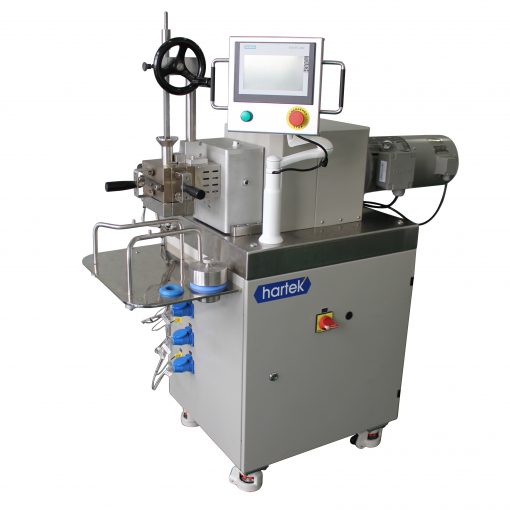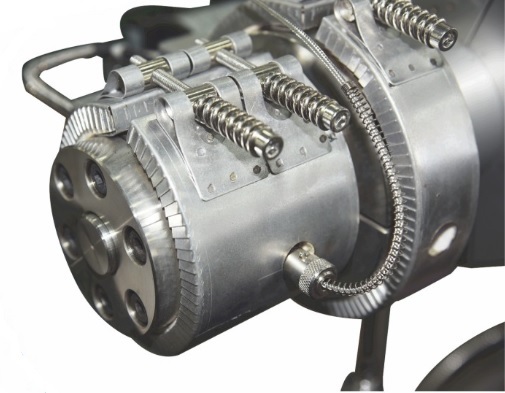The lab cast film machine is mainly composed of a lab extruder and a lab cast film machine.
The lab extruder is driven by servo motor, PLC control, PID temperature setting, strict American standard electrical standard, strict separation of strong and weak electricity, interference source shielding. Friendly human-computer interaction interface, all operation actions are on the interface, and the operation screen can be selected to further facilitate the operation.
The T-shaped die is one of the key components of the cast film. The die design should make the material flow out uniformly along the entire lip width. There is no dead angle in the internal flow channel of the die, and the material mold has a uniform temperature. Consider many factors including material rheological behavior. To use a precision die, a tapered manifold hanger die is commonly used.
The surface of the chill roll should be finished, the surface roughness <0.15mm, the rotation speed should be stable, the dynamic balance performance should be good, so as to avoid the longitudinal thickness fluctuation, the roll surface temperature should maintain a high consistency, the solution is advanced roller The inner flow path is designed to ensure that the heating medium is heated evenly in the roll.
The thickness of the film is monitored by a thickness gauge to achieve a satisfactory thickness tolerance, and there is a thickness measurement method such as B-ray or infrared.
To produce a qualified cast film, it is necessary not only to adjust the process on the raw material, but also to master the processing conditions. The most important influence on the film properties is the temperature. As the temperature of the resin increases, the longitudinal (MD) tensile strength of the film increases, the transparency increases, and the haze gradually decreases, but the transverse (TD) tensile strength of the film decreases. A suitable temperature is 230~250C. The chiller upper wind knife forms a thin layer of air on the surface of the film and the chill roll to evenly cool the film, thus maintaining high speed production. The adjustment of the air knife must be appropriate. If the air volume is too large or the angle is improper, the thickness of the film may be unstable or not applied to the roller, causing wrinkles or patterning to affect the appearance quality. As the temperature of the chill roll increases, the stiffness of the film increases and the haze increases. If the internal additive of the raw material is deposited on the surface of the cooling roller, it must be shut down to avoid affecting the appearance quality of the film. The cast film is relatively soft, and the pressure and tension must be adjusted according to the thickness of the film, the production rate, and the like when winding. Otherwise, ripples will affect the flatness. The tension selection depends on the tensile strength of the product. Generally, the larger the winding tension, the less the reeling and deviation of the product after winding, but the corrugation is easy to occur when the winding is started, which affects the flatness of the roll. On the contrary, the take-up tension is small, and the starting effect is good, but the more the roll is, the more likely the film is slack and the deviation occurs.
The labl cast film machine seems to be simple. In fact, it is not easy to do it because the speed of the test machine is not high, and the line speed is basically maintained below 10m/min, which requires a lab extruder and lab cast film machine. The low frequency running performance of the machine should be stable and reliable.




